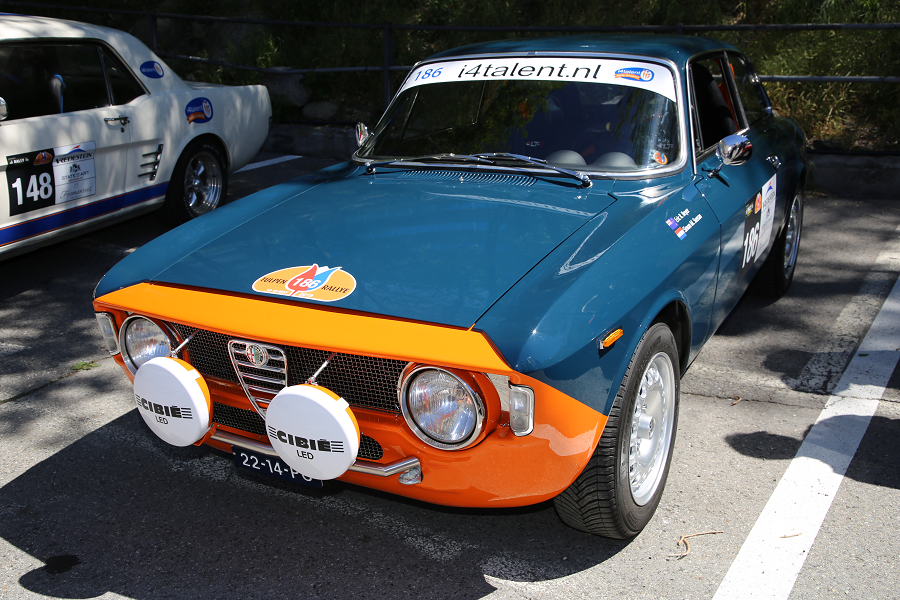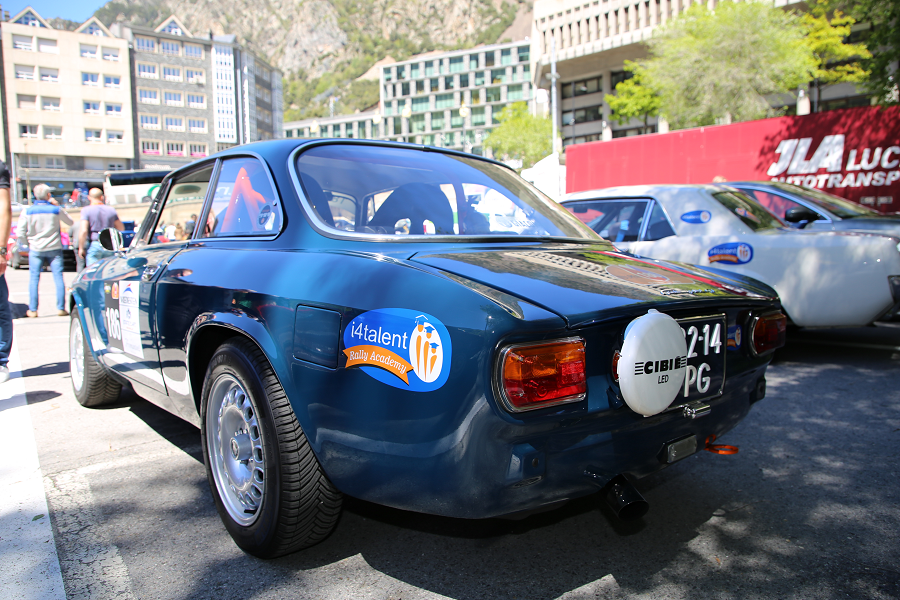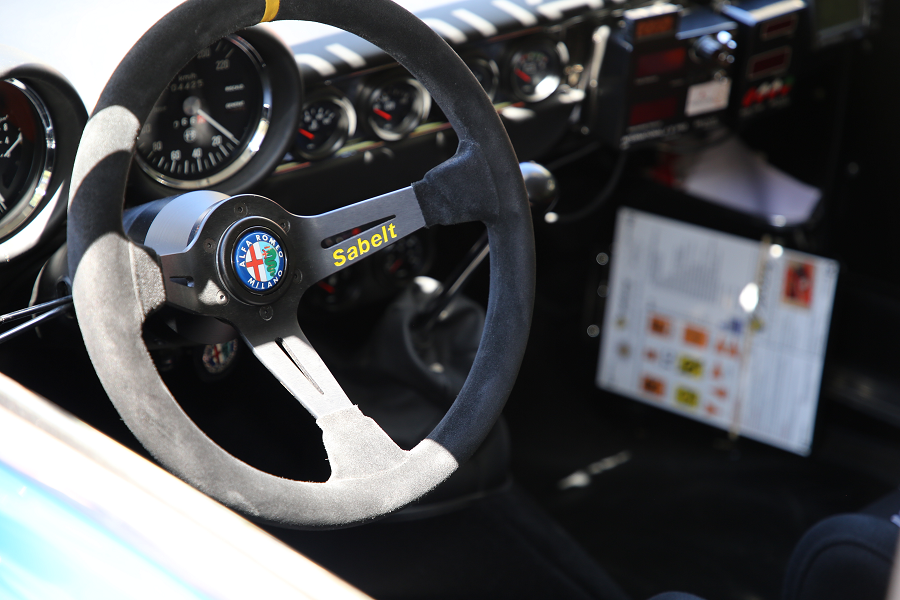Alfa Romeo Giulia Sprint GT from 1975: blue and orange
The Alfa Romeo 105 and 115 series coupés are a range of cars made by the Italian manufacturer Alfa Romeo from 1963 until 1977, based on a shortened floorpan from the Giulia saloon. They were the successors to the Giulietta Sprint coupé.
The basic body shape shared by all models was designed by Giorgetto Giugiaro for Bertone. It was one of his first major projects for Bertone, and borrowed heavily from his earlier design for the Alfa Romeo 2000 Sprint/2600 Sprint. The balance of glass and metal, the influence of the shape of the front and rear glass on the shape of the cabin, and the flat grille with incorporated headlamps were groundbreaking styling features for the era.
A limited production (1000 units) convertible was a modification from the standard car by Touring of Milan, offered as a catalogue model by Alfa Romeo called the Giulia Sprint GTC.
A small number of the GT Junior Zagato were also built with a very different, aerodynamic two-seater coupé body designed by Ercole Spada for Zagato of Milan. These too were offered by Alfa Romeo as catalogue models, as the GT 1300 Junior Zagato and later GT 1600 Junior Zagato.
Giulia Sprint GT (1963–1965)
The Alfa Romeo Giulia Sprint GT was the first Giulia sport model introduced, and was manufactured from 1963 to 1965. It was revealed at a press event held at the then newly opened Arese plant on 9 September 1963, and displayed later the same month at the Frankfurt Motor Show.
In its original form the Bertone body is known as scalino (step) or “step front”, because of the leading edge of the engine compartment lid which sat 1 cm (0.4 in) above the nose of the car. The Giulia Sprint GT can be distinguished from the later models by the following features:
- Exterior badging: Alfa Romeo logo on the front grille, a chrome script reading “Giulia Sprint GT” on the boot lid, and rectangular “Disegno di Bertone” badges aft of the front wheel arches.
- Flat, chrome grille in plain, wide rectangular mesh without additional chrome bars.
- Single-piece chrome bumpers; no overriders.
Inside the cabin the padded vinyl dashboard was characterised by a concave horizontal fascia, finished in grey anti-glare crackle-effect paint. Four round instruments were inset in the fascia in front of the driver. The larger diameter inner pair were tachometer and speedometer; the outer ones were smaller combination instruments, the left hand one holding oil pressure and fuel level gauges, the right hand one oil and water temperature gauges. The steering wheel was non-dished, with three aluminium spokes, a thin bakelite rim and a centre horn button. Vinyl-covered seats with cloth centres and a fully carpeted floor were standard, while leather upholstery was an extra-cost option.
The Sprint GT’s could be ordered in the Bertone De Luxe body which included extra options. One of the extra options was leather seats. There were five leather seat colours available for the Sprint GT they were dark brown leather (pelle testa di moro), red leather (pelle rossa), black, grey and beige.
After initially marketing it as a four-seater, Alfa Romeo soon changed its definition of the car to a more realistic 2+2.
The Giulia Sprint GT was fitted with the 1570 cc displacement version of Alfa Romeo’s all-aluminium twin cam inline four (78 mm bore × 82 mm stroke, 6.38 L oil sump, 7.41 L radiator), which had debuted on the 1962 Giulia Berlina.
Breathing through two twin-choke Weber 40 DCOE 4 carburettors, on the Sprint GT this engine produced 106 PS DIN (78 kW; 105 hp) or 122 PS SAE gross at 6000 rpm.
Like all subsequent models, the Sprint GT was equipped with an all-synchromesh 5-speed manual transmission. The braking system comprised four Brembo disc brakes and a vacuum servo.
The rear brakes featured an unusual arrangement with the slave cylinders mounted on the axle tubes, operating the calipers by a system of levers and cranks. According to Alfa Romeo the car could reach a top speed of “over 180 km/h (112 mph)”; Italian car magazine Quattroruote observed a top speed of 181.935 km/h (113 mph) in its December 1964 road test.
In total 21,902 Giulia Sprint GT were produced from 1963 to 1965, when the model was superseded by the Giulia Sprint GT Veloce.
Of these 2,274 were right hand drive: 1,354 cars fully finished in Arese, and 920 shipped in complete knock-down kit form for foreign assembly.













